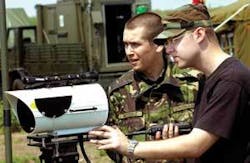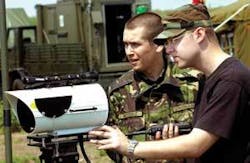Air Force taps Johns Hopkins to integrate high-speed laser communications links
By John Keller
WRIGHT-PATTERSON AFB, Ohio - U.S. Air Force researchers are looking to scientists at Johns Hopkins University in Baltimore to design and install a bidirectional optical interface between data-link terminals from two U.S. defense and communications companies.
The Johns Hopkins Applied Physics Laboratory will work with L-3 Communications Corp. in New York and AOptix Corp. in Campbell, Calif., to bridge data link terminals from the two companies via a free-space laser communications link.
Officials of the Air Force Research Laboratory at Wright-Patterson Air Force Base, Ohio, are negotiating a sole-source contract with Johns Hopkins to do the job, Air Force officials announced in December.
Johns Hopkins scientists will develop a bidirectional optical interface between a high-speed router in an L-3 data-link terminal and an AOptix free-space optical-communications terminal. They will do development and testing primarily at the AOptix facility in Campbell, Calif., do extended free-space range testing in Hawaii with the data links located about 94 miles apart.
The optical interface will provide:
- reliable transfer of information between the two terminals;
- a wavelength translation from the 1310-nanometer source on the router to the 1550-nanometer band used by the free-space optical communications terminal;
- high signal-to-noise ratio optical transmit signal necessary for long distance laser communications;
- an optical automatic gain control function for the receive side; and
- wavelength-division-multiplexed optical channels to provide multiple channel operation on the laser communications link.
This effort also will address combining RF and optical communications, conditioning optical signals with high dynamic range optical modems, and accomplish reliable free-space multiple channel communications in extended range testing.
For more information contact the Johns Hopkins Applied Physics Lab online at www.jhuapl.edu, L-3 Communications at www.l-3com.com, or AOptix at www.aoptix.com.

